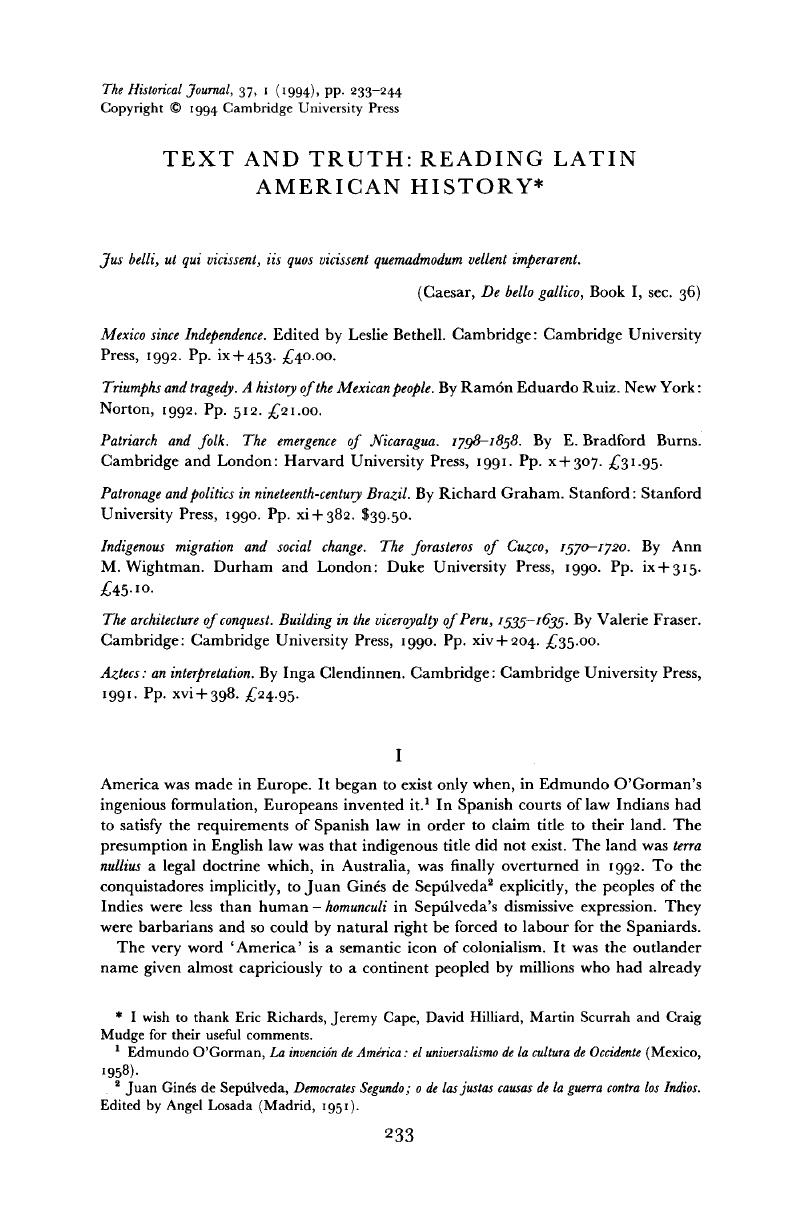No CrossRef data available.
Published online by Cambridge University Press: 11 February 2009

I wish to thank Eric Richards, Jeremy Cape, David Hilliard, Martin Scurrah and Craig Mudge for their useful comments.
1 Edmundo, O'Gorman, La inventión de América: el universalismo de la cultura de Occidente (Mexico, 1958).Google Scholar
2 de Sepúlveda, Juan Ginés, Democrates Segundo; o de las justas causas de la guerra contra los Indios. Edited by Angel, Losada (Madrid, 1951).Google Scholar
3 The etymology (Gaelic: sluagh = army; gairm = a cry) is, here, peculiarly appropriate. A slogan is a war-cry.
4 Lockhart, James, The men of Cajamarca ; a social and biographical study of the first conquerors of Peru. (Austin, Texas, 1972).Google Scholar
5 de Sahagún, Fray Bernardino, The Florentine codex. General history of the things of new Spain, translated by Anderson, Arthur J. O. and Dibble, Charles E.. Book XII, ch. 12 (2nd edn, revised, Salt Lake City, 1975).Google Scholar
6 Even in Peru, whose conquerors, uniquely, had the liquid capital which enabled them to choose whether to stay in the Indies or to return home, about a half decided to stay. Lockhart, , Men of Cajamarca, pp. 44–52.Google Scholar
7 Florentine codex, 8: Appendix C: 89.
8 Simpson, L. B., Many Mexicos (4th edn, revised, Berkeley, California, 1966).Google Scholar
9 Brooks, Francis J., ‘Revising the conquest of Mexico: smallpox, sources, and population,’ Journal of Interdisciplinary History, XXIV (1993), 1–29.CrossRefGoogle Scholar
10 Twenty-Four Hours (ABC Publications, Sydney, 1992), pp. 37–9.Google Scholar
11 Geertz, Clifford, Works and lives: the anthropologist as author (Stanford, California, 1988), p. 10.Google Scholar
12 Carrasco, David, ‘City as symbol in Aztec thought: the clues from the Codex Mendoza’, History of Religions, XX (1981), 199–223.CrossRefGoogle Scholar
13 Aho, James A., Religious mythology and the art of war. Comparative religious symbolisms of military violence (Westport, Conn., 1981).Google Scholar
14 MacCormack, Sabine, Religion in the Andes: vision and imagination in early colonial Peru (Princeton, New Jersey, 1991).Google Scholar
15 Cortes, Herndn. Letters from Mexico. Translated and edited by Pagden, A. R. (New York, 1971).Google Scholar